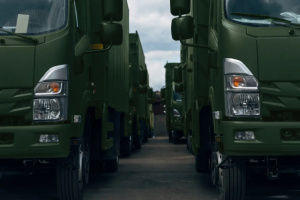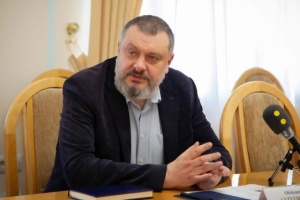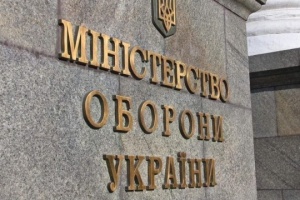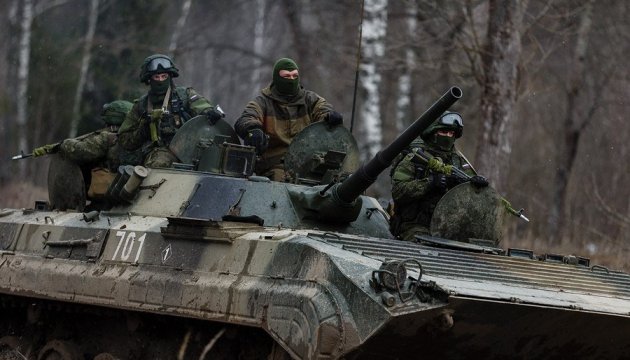
Kremlin's rehearsal of a great war on Belarusian territory
There is common and striking feature in almost all military operations that Russia has recently conducted. All hostilities, the destruction of villages and cities, the theft of industrial infrastructure, all the killings, crimes against humanity and acts of looting - all this is carried out by Russia outside its national territory.
Even counterterrorist operations, which Russian troops and special forces regularly conduct in Chechnya, Ingushetia and Dagestan, are no exception to this rule. The mentioned territories of the Caucasian republics, which are de jure part of the Russian Federation, de facto, mentally and psychologically, have long since not been part of it, and therefore are perceived by their residents as "parent states," as something hostile, wild and incomprehensible, a kind of a "foreign country," which can be destroyed without excessive regret and reproach of conscience.
In this context, it's worth remembering the classics. The quote "to win an enemy with little blood on its territory" belongs to "red" marshal Kliment Voroshilov, who, ironically, said these words in Kyiv back in 1936.
What happened after that is a well-known fact. But the concept has not changed significantly. As the "Stalin's Falcons" once reasoned, so Russian generals and the Kremlin's "wise men" now prefer to pursue their own interests through bloodshed in foreign territories, be it Ukraine, Georgia, Moldova, or Azerbaijan.
In this context, the Russian (yes, Russian!) exercises Zapad-2017, a major part of which should take place on the Belarusian territory this autumn, should have alarmed the Belarusian authorities. Among the closest post-Soviet neighbors of Russia (Belarus is no exception) there are virtually no countries that would have not come in any way through civil strife and bloodshed. And "Russian ears are sticking out" almost everywhere. Instead of building a "belt of stability" and a friendly environment around itself, Russia sows war and devastation, and this constant wonder in its behavior has already been noticed all over the world.
It is also in this case that the current so-called Russian-Belarusian exercises Zapad-2017 are just part of the Russian strategic command and staff exercises, with the coverage of vast territories and the involvement of a significant number of troops. These Russian drills are a rehearsal of a major European military conflict, the actions of which, according to the plan and scenario, will unfold on the territory of Belarus and its neighbors.
Does Belarus need it? That's a rhetorical question. But it's not obvious for everyone, at least not for the Belarusian General Staff, which calls the rush around Russian exercises on its own territory as "artificial" and "inappropriate."
Let's try to figure out where the hidden truth lies.
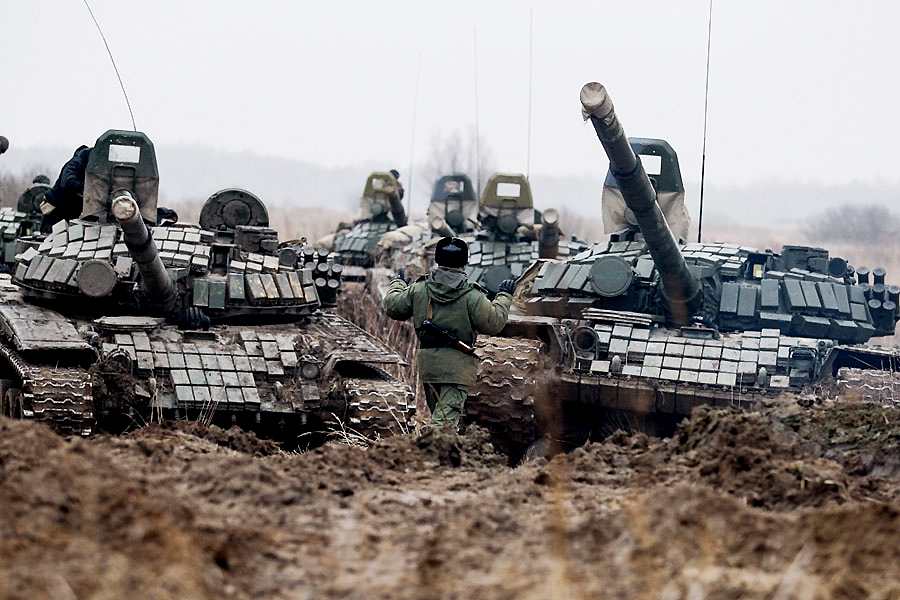
IN THE WESTERN STRATEGIC DIRECTION
There is nothing unexpected in Russian maneuvers. Such strategic command and staff exercises are conducted once every four years in the military-administrative boundaries of the military districts of the Russian Armed Forces (Southern, Western, Central and Eastern, as well as the Arctic Region). According to the plan, during the period of the escalation of the military threat and in time of war, these districts turn into Joint Strategic Commands of the Russian Armed Forces – "South," "West," "Center," "East" and "North" respectively.
As a rule, each of such strategic command and staff exercises in the year they are held may be preceded by one to two large-scale sudden inspections of the combat readiness of the headquarters and troops of a certain military district with a wide range of measures regarding the deployment of field management bodies (control points and communications centers) in designated areas, the reinforcement of groups of troops with personnel and equipment, including from other military districts (in a combined way, at long distances), and the working out of possible options for the use of troops and the conduct of combat operations in one or two strategic directions, including against NATO troops (forces).
Therefore, from September 14 to September 20 this year it is planned to carry out such strategic command and staff exercises of the Russian Armed Forces, which, according to the plans on the operational and combat training of the Russian Armed Forces, are held once in four years in the military-administrative boundaries of the Western Military District of the Russian Armed Forces.
During the Zapad-2017 exercises the General Staff of the Russian Armed Forces plans to:
- check and clarify the plan of strategic use of the Russian Armed Forces in the Western strategic direction;
- assess the mobilization resources and the state of mobilization readiness of the economy, transport and public administration of the Russian Federation for functioning in a special period and in wartime.
According to the plan of the highest military-political leadership of the Russian Federation, during the Zapad-2017 exercises it is planned to work out possible variants of armed opposition:
- to the U.S./NATO coalition troops (forces) in case of the blocking and capturing of the Kaliningrad enclave;
- to an attempt by Ukraine to de-occupy Crimea and/or certain districts of Donetsk and Luhansk regions, with the support of the western allies;
- to attempts to change the political regime in one of allied states of Russia.
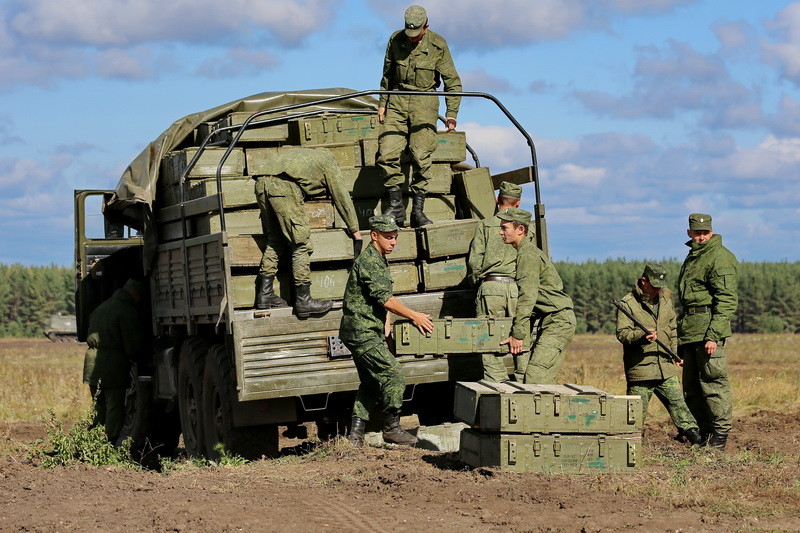
NEIGHBORS' COVER
As part of the operational cover of the actual orientation and scope, as well as the real nature of the tasks that will be worked out during the Zapad-2017 strategic command and staff exercises, it is planned to hold a joint Russian-Belarusian exercise (the Union State of Russia and Belarus) under the identical conditional name "Zapad-2017" on the Belarusian territory.
Russian-Belarusian drills similar to Zapad-2017 are held every two years in Russia and Belarus. They began to hold them in 2009, when the presidents of the two countries, Dmitry Medvedev and Alexander Lukashenko, attended the first such event and decided to make the maneuvers regular.
In September 2017, the practical part of the exercises will be held in Belarus at six firing grounds. Up to 12,700 servicemen are to be involved in the exercises, including about 10,200 in Belarus (7,200 from the Armed Forces of Belarus and over 3,000 from the Armed Forces of Russia). It is planned to engage 680 units of military equipment.
This number does not require the notification of international organizations, but the participants of the exercises plan to invite military attaches accredited to the Belarusian Defense Ministry, as well as representatives of the UN, OSCE, NATO, the Collective Security Treaty Organization, the CIS and the International Committee of the Red Cross. In total, more than 80 observers will be invited, in particular from Ukraine, Poland, Lithuania and Latvia, as well as from Estonia, Sweden and Norway.
The servicemen of the Russian Armed Forces, engaged in the preparation of the Russian-Belarusian exercises Zapad-2017, started arriving in Belarus in June this year.
The Zapad-2017 strategic command and staff exercises of the Russian Armed Forces, in turn, will differ from the previous Zapad-2013 exercises with much greater spatial extent and the number of involved personnel and military equipment.
Thus, the Zapad-2017 maneuvers are to be conducted almost throughout the European part of the Russian Federation (within the military-administrative boundaries of the South, West and North Joint Strategic Commands of the Russian Federation), in the occupied Crimea and certain districts of Donetsk and Luhansk regions, along the borders of Ukraine, in particular in the Mariupol, Donetsk, Slobozhansky and Polisky sectors, in Belarus, as well as in the Black, Mediterranean and Baltic Seas.
In addition to the armed forces, the exercises will also be attended by the bodies of state administration at the federal, regional and local levels, units of the Federal National Guard Service, the Interior Ministry, the Federal Security Service, the Emergencies Ministry, representatives of the Russian defense sector, etc.
At the same time, the actual number of participants in all events as part of Zapad-2017 is estimated by military experts at 230,000-240,000 people, more than 10,000 units of military equipment, about 100 aircraft and about 40 ships/submarines of different classes.
That is, taking into account the peculiarities of the current military-political situation around Russia, primarily in the context of the further escalation of its confrontation with the United States, NATO and the EU, the Zapad-2017 strategic command and staff exercises have a geostrategic aim, namely, a demonstration of Russia's military strength before the United States and Europe, and as well as the readiness for its application.
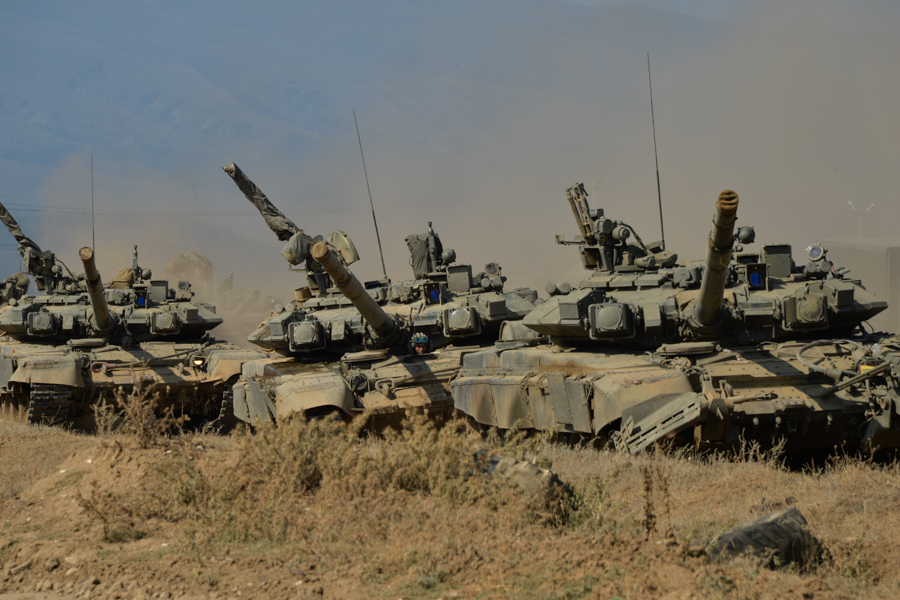
ATTACKING STRATEGY
A comprehensive inspection of the Russian Armed Forces for the winter period of exercises in March-April this year has become the actual "rehearsal" of the Zapad-2017 strategic command and staff exercises.
Based on the analysis of the operational and combat training of the Russian Armed Forces that was carried out during the inspection, the scenario of Zapad-2017 foresees the working out of questions on the organization and holding of an offensive operation in the Western strategic direction, as well as defensive operations in other strategic directions.
In particular, the most demonstrative was the joint exercise of battalion tactical groups consisting of the 106th airborne division (headquartered in Tula) of the Russian Armed Forces and the 103rd separate airborne brigade of the Special Forces of the Russian Armed Forces in the Vitebsk region in April this year.
During the same period, a number of exercises of the Russian Baltic Fleet were conducted on the landing of sea troops by the forces of the 336th marine corps brigade of the Black Sea Fleet (Baltiysk, Kaliningrad region) and strikes on the enemy's objects by missile ships and submarines and maritime aviation.
In addition, the offensive exercises were also attended by unions and units of the 1st tank army (headquartered in Naro-Fominsk, Moscow region) and the 20th general army (headquartered in Voronezh), as well as the 6th general army (headquartered in St. Petersburg) and the 1st army (headquartered in St. Petersburg) of the air defense forces of the Russian Armed Forces.
At the same time, the elements of a defensive operation in the South-Western (Black Sea) strategic direction were worked out as part of this comprehensive inspection.
The main such events were held in Crimea and included joint exercises of battalion tactical groups of the 7th Airborne Assault Division (headquartered in Novorossiysk), the 56th Airborne Assault Brigade (Kamyshin) and 11th Airborne Assault Brigade (Ulan-Ude), as well as exercises of the 126th Separate Coast Guard Brigade of the Russian Black Sea Fleet.
In the course of these activities, the tasks were resolved on the formation of a group of rapid reaction forces to strengthen the Russian Armed Forces in Crimea, the organization of anti-missile defense in cooperation with the Russian Black Sea Fleet, the destruction of the enemy on the territory of Crimea with the support of tactical and military aircraft, the elimination of saboteurs and taking control of important objects.
Some issues of the defensive operation were also worked out during the exercises of the naval forces and naval aviation of the Russian Black Sea Fleet, as well as the 49th (Stavropol) and 58th (Vladikavkaz) general armies of the Southern Military District and the 4th army (Rostov-on-Don) of the air defense forces of the Russian Armed Forces.
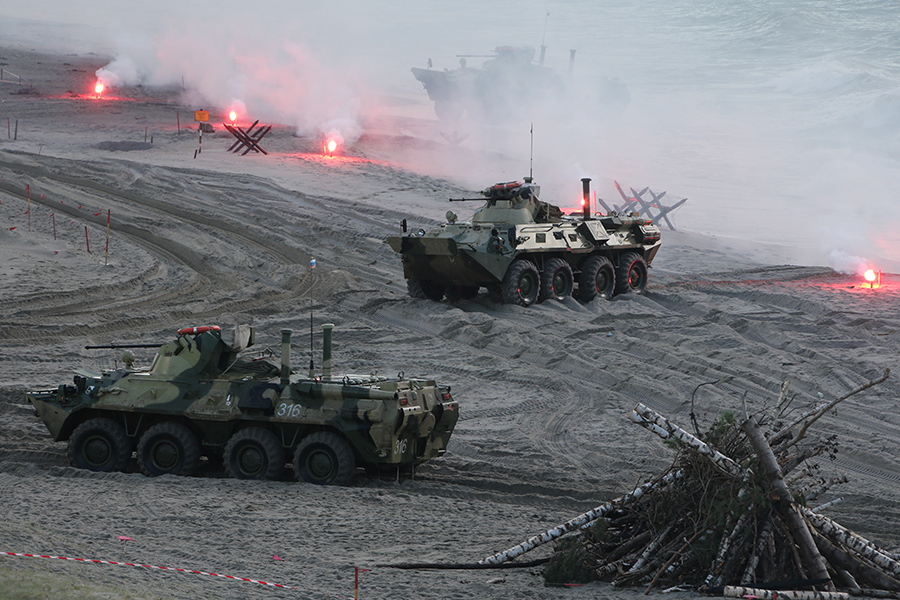
PAWNS AND ACTORS
Taking into account the abovementioned circumstances, in the major, Western strategic direction Zapad-2017 will involve units of the Western Military District of the Russian Armed Forces, as well as certain parts from other districts and branches of the Russian Armed Forces.
Thus, the main participants in the exercises will be the 1st tank army, the 6th and 20th general armies, the 1st army (headquartered in St. Petersburg) of the air defense forces of the Russian Armed Forces, the units of the 76th (Pskov), 98th (Ivanovo) and 106th (Tula) airborne divisions, as well as the forces of the Baltic and Northern fleets (including the newly created 11th and 14th army corps of coast guard troops respectively). In addition, the Belarusian Armed Forces will participate in the exercises.
In turn, the working out of the tasks of a defense operation in the South-Western (Ukrainian and Black Sea) strategic direction will involve the forces of the 8th and 49th general armies of the Southern Military District of the Russian Armed Forces, groups of Russian troops in the occupied Crimea, the 7th Airborne Assault Division, 21st and 56th separate assault brigades, as well as the 1st army of the air defense forces of the Russian Armed Forces and the Black Sea Fleet.
The 8th general army (headquartered in Rostov-on-Don), which was established in 2017 in the Ukrainian direction in the composition of the 150th motorized infantry division (headquartered in Novocherkassk, newly formed) and 20th separate motorized infantry brigade (headquartered in Volgograd, transferred from the 49th army), which will be involve in the Zapad-2017 exercises for the first time.
Units of other law enforcement agencies in Russia, including FSB, National Guard, Emergencies Ministry, Interior Ministry, the Federal Agency for Government Relations, will also take part in the Zapad-2017 strategic command and staff exercises.
Since the beginning of August this year the concentration of Russian troops (including the 1st tank army) has been recorded in the areas where the main activities of the Zapad-2017 drills will be worked out. Compared with 2015, rail transportation to Belarus will grow by 33 times, and compared with 2016 it will increase by 83 times. In total, in 2017, 4,162 railway wagons with military cargo should arrive in Belarus from Russia.
This fact is a cause for concern by Western military experts in the context of the possible deployment of arms and military equipment by the Russian Armed Forces on a permanent or rotational basis on the Belarusian territory (after the maneuvers) - on the eastern borders of NATO. And this, accordingly, will lead to a build-up of the military infrastructure of the Russian Federation on the borders with NATO countries.
The concentration of Russian troops, including tank, motorized rifle and artillery parts and units is also recorded near the border of Ukraine, including in the eastern regions of the Voronezh and Rostov regions of the Russian Federation.
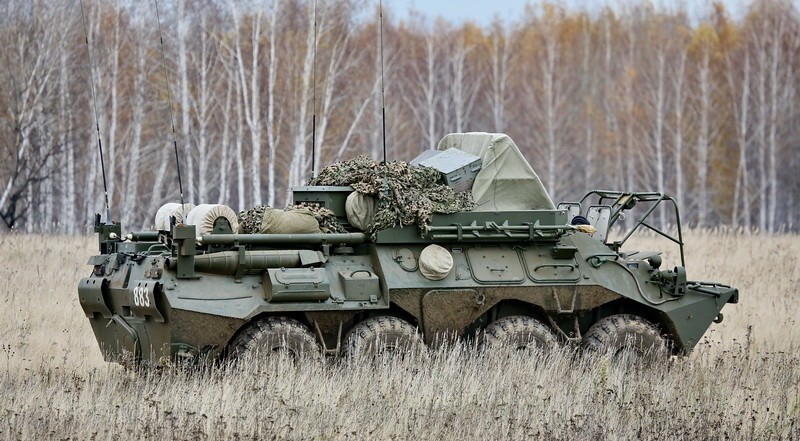
Planned preparations for Zapad-2017 were held in the last days of August this year. During this period, joint special exercises were organized with the military administration and communications agencies, formations and organizations of logistics support of the armed forces of both countries. The issues of the technical cover of objects and certain areas of roads, evacuation, repair and restoration of faulty equipment and weapons, deployment of the field trunk pipeline, as well as areas of mass refueling of machinery, were worked out.
In addition, as part of preparations for Zapad-2017, a number of individual operational and combat training activities were carried out in Belarus, particularly the Russian-Belarusian training of units of electronic intelligence and electronic warfare (involving up to 1,500 servicemen and 150 units of military equipment); Russian-Belarusian-Serbian maneuvers "Slavic Brotherhood 2017" (over 1,000 servicemen and 150 units of military equipment); joint maneuvers of the separate engineer battalion of the 1st tank army of the Russian Armed Forces and the 188th engineering brigade of the Belarusian Armed Forces in mid-July this year; joint tactical-special exercises of the units of Russian and Belarusian communications forces.
According to Russian Defense Minister Sergei Shoigu, Zapad-2017 will be preceded by a comprehensive mobilization training to resolve the issues of the transfer of federal and regional executive bodies, as well as enterprises of the defense industry sector, to work in conditions of wartime.
According to the experience of the previous strategic command and staff exercises, on the eve of the active phase of maneuvers (10-14 days before the drills), "sudden checks" might be conducted on the combat readiness of the headquarters and troops of the Western and other military districts of the Russian Armed Forces.
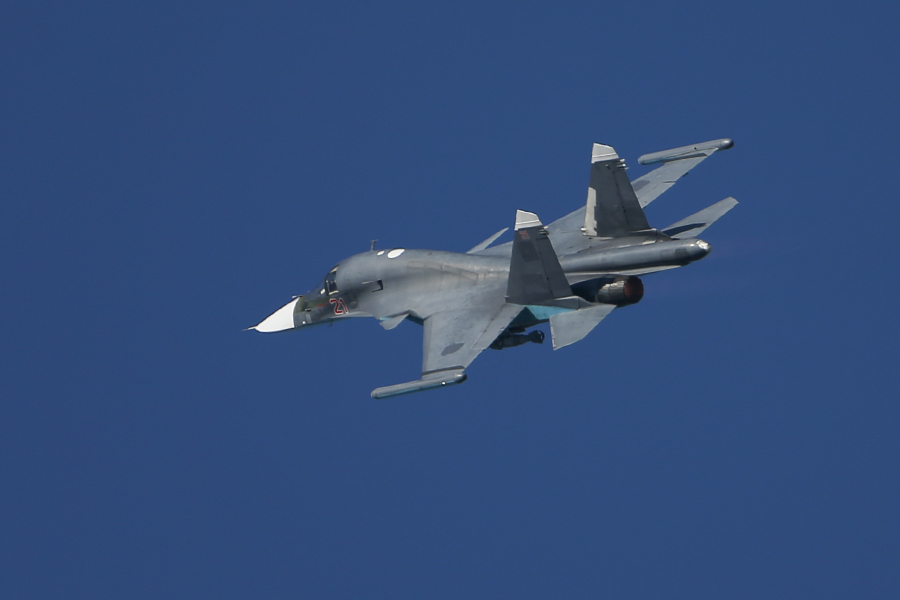
EXTERNAL ENTOURAGE AND ATTEMPTS OF PRESSURE
Preparations for Zapad-2017 are carried out in the context of another intensification of Russian-American relations as a result of the introduction of a new package of sanctions against Russia in August this year. In this regard, Zapad-2017 is actually used by Moscow as an impudent attempt and a means of pressure on the United States and its European allies.
At the same time, under certain conditions, the continuation of the Zapad-2017 exercises could be Russia's real aggression against Poland and the Baltic states, or a full-scale invasion of Ukraine (including from Belarus), so as to create a land corridor to Transdniestria and Crimea and, as a maximum, the ultimate settlement of the "Ukrainian question" in its favor.
An armed conflict in the Asia-Pacific region between the United States and North Korea with the interference of China could be a catalyst for such a scenario, as it would divert the attention of the world community from European problems.
An indication of the real possibility of such actions by Moscow is the previous practice of carrying out the Caucasus-2008 exercises, after which Russia attacked Georgia, as well as Zapad-2013, which preceded Russia's armed aggression against Ukraine. In this context, such drills actually serve as a kind of rehearsal of some adventures.
In this regard, it should be taken into account that Russia continues to carry out large-scale measures to strengthen the combat capability of the Western and Southern military districts by re-equipping its parts and units with new types of weapons and military equipment.
Since the beginning of this year, the Western Military District has received more than 500 units of modern military equipment, including tanks, rocket-artillery systems, multifunctional Su-30SM fighters and cars of various uses. A considerable amount of military equipment also came to the troops of the Southern Military District, including more than 160 tanks, infantry fighting vehicles and armored personnel carriers. By the end of this year, the district should receive more than 1,800 units of arms, including 900 armored vehicles.
The beginning of the formation of shock army units of the Russian Armed Forces, fully staffed and equipped with military equipment, is also indicative. In particular, regiment and battalion shock groups were created as part of the 76th Airborne Division of the Russian Armed Forces. The creation of a separate shock assault battalion of the 7th Airborne Assault Division in Crimea is underway. The battalion will be located near Feodosia and will enter into combat forces by December 1, 2017. The 97th Airborne Assault Regiment will be deployed in Crimea on the basis of this battalion by the end of 2017.
Along with this, the creation of a special-purpose intelligence companies (the decision on this issue was taken in 2016) in the Russia ground forces continues. The task of these units is to search for certain objects in the rear of the enemy with the further transfer of their coordinates in the interests of the combat application of Iskander-M tactical missile systems and Uragan multiple rocket launchers. One of such companies is to be formed in each of the general and tank armies.
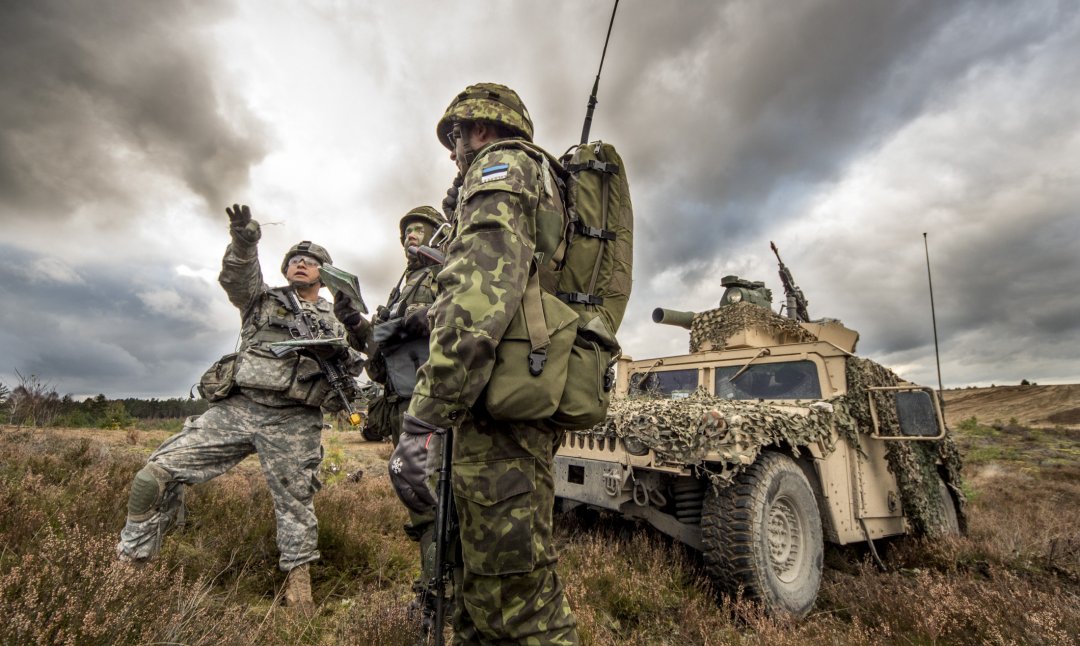
NATO'S AWAKE
Such actions by Russia cause considerable concern in the leadership of NATO, the Baltic states and Poland, which are taking measures to prevent possible aggression by Russia.
Thus, as part of a series of military training exercises, NATO conducted a preventive build-up of the alliance's rapid response forces in the Baltic region, as well as worked out the issues of repelling a possible attack by Russia. In particular, the tasks were solved on establishing interaction between the headquarters of different levels; receiving troops from NATO countries by land, sea and air; as well as conducting defense and counter-offensive operations.
In addition, the strategic nuclear component of the U.S. Armed Forces in Europe was strengthened. In particular, at the beginning of June this year, five strategic bombers B-52H and B-1B of the U.S. Air Force were sent to the Fairford Airbase in the UK. For the first time since the end of the Cold War, these aircraft have started flying over the Baltic Sea.
At the same time, in July this year, the Patriot anti-aircraft missile system of the US Air Force was temporarily deployed in Lithuania, while seven F-15C Eagle aircraft of the U.S. Air Force aircraft were sent to the Siauliai Air Base in Lithuania in August.
A new series of exercises by the U.S., NATO and their partners, involving land, sea and air components, are to be held in the Baltic region for the period of the Zapad-2017 exercises. In particular, in September this year, the U.S. and Finnish navies are planning to hold joint exercises near the Swedish coast.
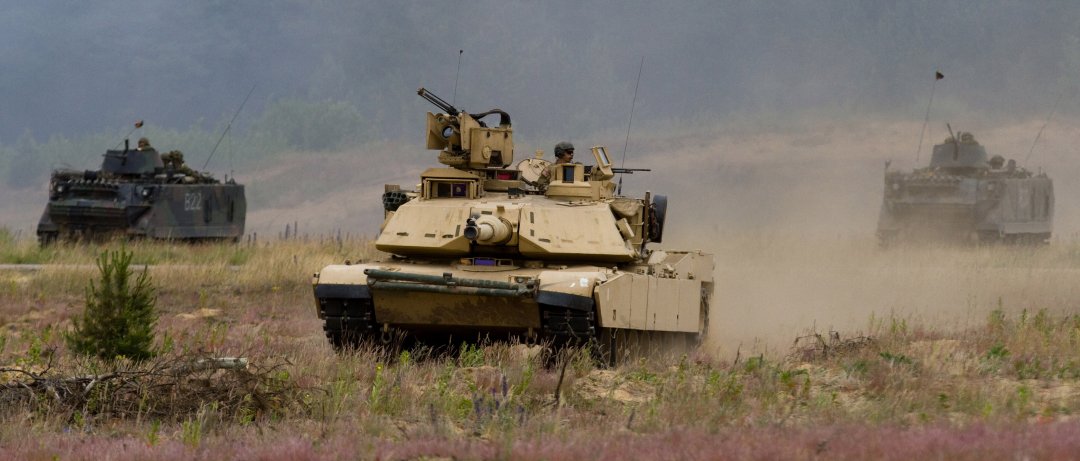
OBSESSIVE PHANTOM OF ESCALATION
In general, the above processes cause a significant strengthening of military tension in Central and Eastern Europe, the Baltic and Black Sea regions. It does not exclude the possibility of expanding the scale of Russia's armed aggression against Ukraine or the Russian side's attack on the Baltic states, which is likely to lead to a "hot" armed conflict between Russia and the United States/NATO.
In addition, quite dangerous is the holding by Russia and the U.S./NATO of simultaneous military operations in the same regions, which increases the threat of provocative incidents and collision of parties (including involving carriers of nuclear weapons) with unpredictable consequences.
According to Head of the General Staff of the Ukrainian Armed Forces Viktor Muzhenko, Ukraine is closely monitoring the Russian exercises in Belarus and is ready to respond to probable threats that may come from the Kremlin. He also added that a "series of tactical exercises" are already being conducted on Ukrainian territory and that they coincide with Russian maneuvers in terms of time and place (probably accidentally!).
Such allegations, as well as the announcement of the involvement of the first-round operational reserve in the Ukrainian Armed Forces, allow us to hope that Ukraine is ready for any recklessness on the part of the Kremlin's strategists. This circumstance, however, does not deprive Ukraine of the status of a priority goal in the aggressive plans and intentions of Moscow. So this September promises to be hot...
Yuriy Radkovets, Vice President of the Borysfen Intel Independent Analytical Center for Geopolitical Studies, Candidate of Military Sciences, Associate Professor, Lieutenant-General of the Reserve.
Kyiv

